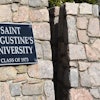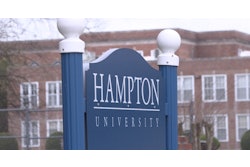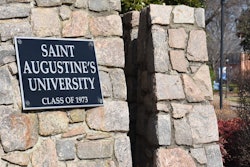With Congress completing work on a $410 billion omnibus spending bill, minority-serving institutions can point to some tangible funding gains in the first months of 2009 with the possibility of more gains ahead.
From earmarks for individual colleges to little-noticed provisions of the economic stimulus package, MSIs have realized gains that may help cushion the effects of the ongoing economic downturn. The stimulus package, for example, includes $15 million for the U.S. Department of the Interior to support historic preservation at historically Black colleges and universities.
HBCUs have $700 million in historic preservation needs, says Edith Bartley, government affairs director at the United Negro College Fund. Still, she notes, “We’re thrilled with this investment. It’s a step in the right direction.”
A state education “stabilization fund” in the stimulus bill also could go toward modernization and improvement. While there is no guarantee that money will flow to higher education, she says, college facilities may be eligible for these funds.
By clearing the omnibus bill and getting President Barack Obama’s signature, Congress ensured that federal education programs will receive funding for the remainder of the 2009 federal fiscal year, which ends in September.
As a result, the omnibus bill has $238 million for HBCUs, $94 million for HSIs and $23 million for tribal colleges. That measure also provides an extra $20 million for TRIO programs, an additional $10 million for GEAR UP and nearly $600 million for the K-12 Title I education program.
Elsewhere in the large omnibus bill, HBCUs would receive $31.5 million and tribal institutions $13.5 million from the National Science Foundation.
The bill also would provide substantial funding to colleges and universities via earmarks, or narrow funding requests from members of Congress. Sometimes called pork-barrel spending, these provisions had delayed consideration of the bill in the House and Senate. President Obama also has signaled a goal to reduce such earmarks.
In a challenging economic environment, however, these earmarks will provide needed funding to many colleges and universities. Recipients of funds include:
Colleges pursue these earmarks on their own. “We don’t go after earmarks,” UNCF’s Bartley says, adding that these are decisions made by individual institutions.
But MSIs collectively are seeking additional federal resources for the 2010 fiscal year, which begins in October. While President Obama has outlined the general framework of his first education budget, line-by-line details are not expected until April. As a result, colleges have more time to make their case for more financial support.
“We’re at a crucial time right now,” Bartley tells Diverse. She notes that UNCF is seeking “significant” increases for the Title III program over the next three years. By outlining priorities that include education, technology and energy, Obama has an agenda that mirrors those of MSIs, she says.
“We know there is a premium placed on education and energy efficiency,” Bartley says. “We cannot afford to let one sector of higher education lag behind.”
© Copyright 2005 by DiverseEducation.com















